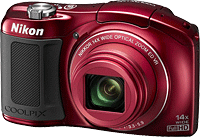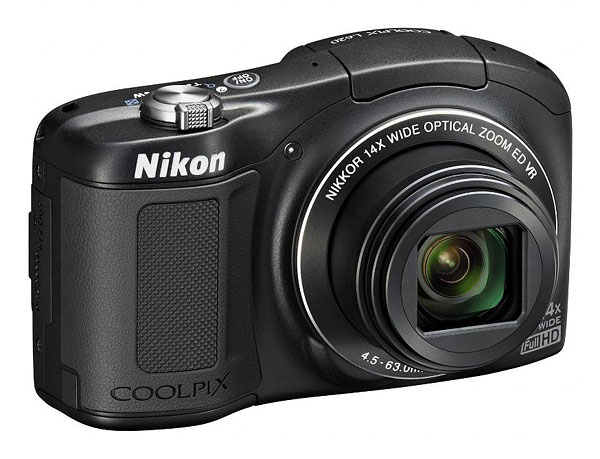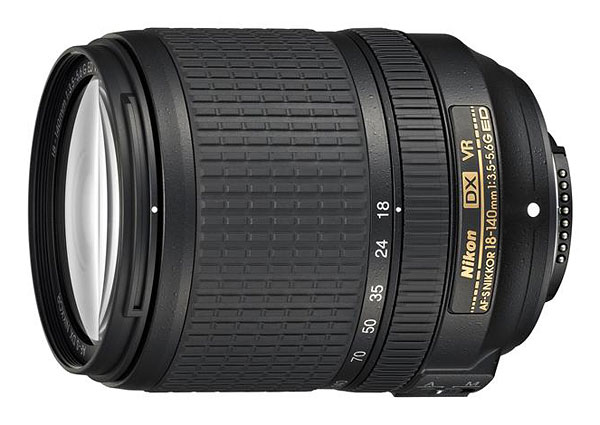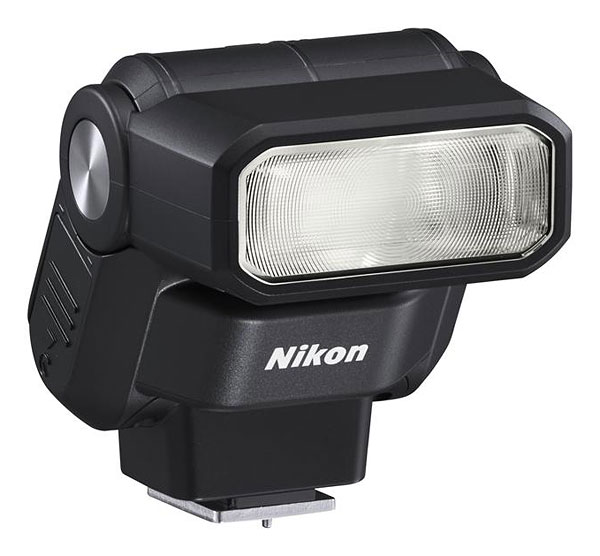Nikon L620 travel zoom camera introduced alongside AF-S DX 18-140mm lens, Speedlight SB-300 flash
posted Tuesday, August 6, 2013 at 12:01 AM EDT

Last year, Nikon introduced the Coolpix L610, a reasonably compact travel zoom with a handy 25 to 350mm-equivalent zoom range. Today, it follows up with a successor -- the Nikon L620 -- which takes the same basic formula but boosts resolution slightly, among other changes. And if point-and-shoot cameras aren't your thing, the company also has a new lens and flash strobe to pique your interest.
But first, the camera. Behind the optically-stabilized, 14x optical zoom lens of the Coolpix L620 sits a new 18.1 megapixel image sensor. Perhaps the most important changes can be found in the movie mode: It now allows recording of Full HD movies at 1080i60, where the earlier model was limited to 1080p30. The Nikon L620 also offers up a stereo microphone in place of the earlier monaural mic. Other differences from the earlier model include a new target-finding capability for the contrast-detection autofocus system, along with monochrome and sepia filter functions.
Available from September 2013 in black and red, the Nikon Coolpix L620 is priced at US$250 or thereabouts. More details can be found in our Nikon L620 preview.

Next up, the Nikon AF-S DX Nikkor 18-140mm F/3.5-5.6G ED VR lens provides... well, pretty much what it says on the label. It's an AF-S lens, which means it has a built-in silent wave autofocus motor, and it's designed for DX-format bodies with a 1.5x (APS-C) focal length crop. It has a 35mm-equivalent focal length range of 27 to 210mm in 35mm-equivalents, for a 7.8x optical zoom range. The maximum aperture falls from f/3.5 at wide angle to f/5.6 by the time you reach the telephoto position, and there's no aperture ring.
The optical formula of the internal focusing design includes one ED and one aspheric lens apiece, and there's a seven-bladed aperture diaphragm. On the front is a 67mm filter thread. Nikon has also included optical image stabilization in the design, and it's said to be good for a four-stop correction. You have a choice of either autofocus with manual override, or manual focus. Size and weight are both a little up on the existing AF-S DX 18-105mm optic, but not unreasonably so. Dimensions are 3.1 inches diameter by 3.8 inches length (78 x 97mm), and weight is 17.3 ounces (490g).
Priced at US$600, the Nikon AF-S DX Nikkor 18-140mm F/3.5-5.6G ED VR lens ships from late August 2013.

The new Speedlight SB-300 flash strobe, finally, targets users of entry-level digital SLRs, and those with higher-end Coolpix compacts which include a hot shoe. It's aimed at keeping size and weight to a minimum. In the process, it also ensures complexity is not an issue -- literally the only controls are tilt angle, a Power switch, and a locking lever for the hot shoe. The attached camera does all of the rest.
The tilting mechanism allows bounce flash at fixed angles of 0, 60, 90, and 120 degrees, and provides probably the most important advantage over your camera's built-in strobe. The guide number is 59 feet (18 meters), and there's enough wide-angle coverage for an 18mm DX-format lens. Power comes from two AAA batteries, and the tiny little SB-300 weighs just 4.2 ounces. There's a thermal cut-out to prevent you damaging the strobe with too much shooting, and it is firmware-upgradable from the attached camera body.
Pricing for the Nikon Speedlight SB-300 is set at around US$150, with availability from late August 2013.
